Design Q&A: Industrial Facility
In designs ranging from chairs to a toilet brush, Industrial Facility forgoes a signature aesthetic in favor of long-term relationships and rigorous inquiry.
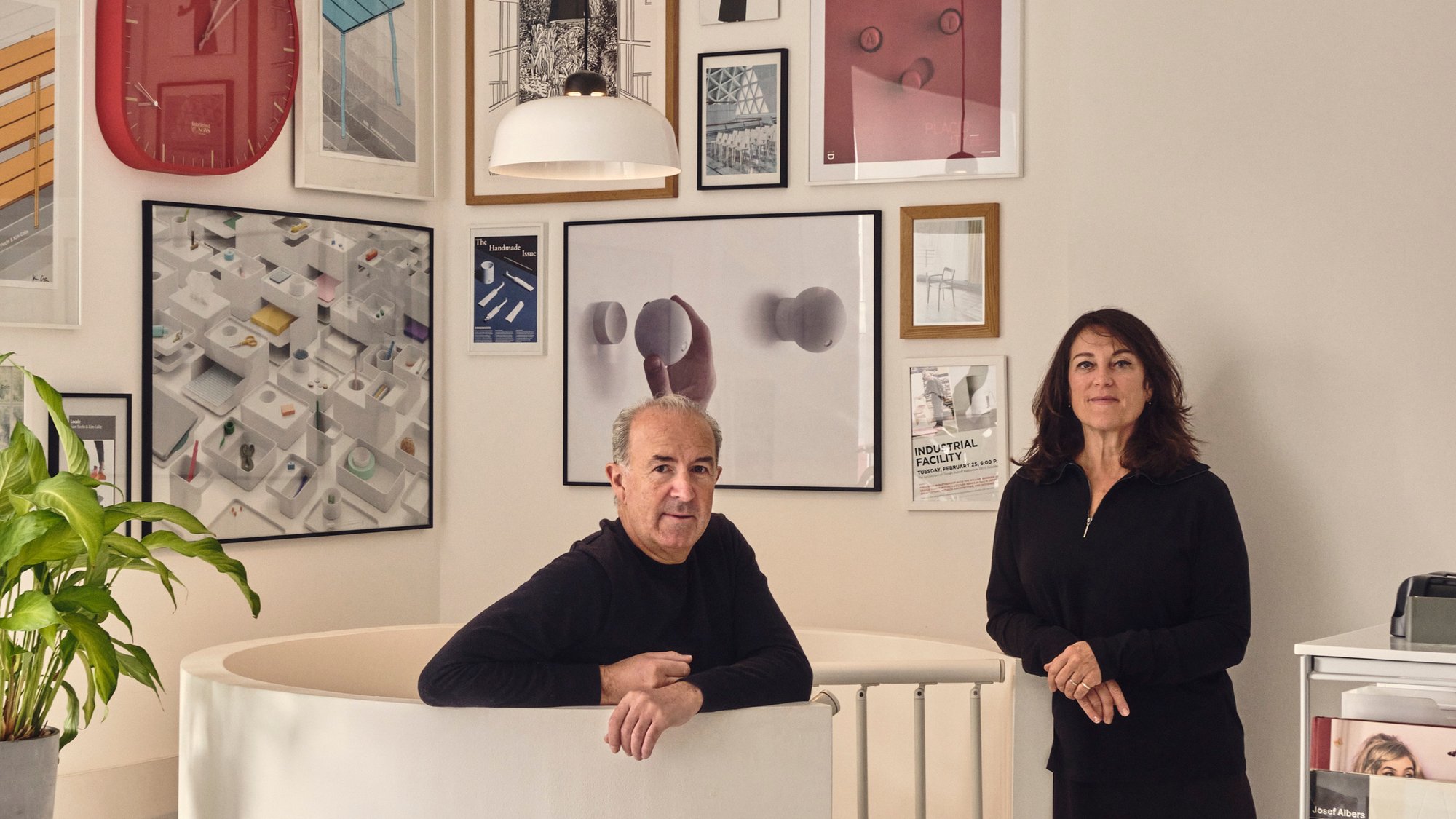
Industrial Facility’s Kim Colin and Sam Hecht in their London studio, surrounded by posters of the firm’s projects.
Since Kim Colin and Sam Hecht opened Industrial Facility in 2002, the studio has designed an unusual variety of objects: a knife sharpener, several seating typologies, lighting, a radio, a paper shredder, knives, a doorstop, watches, a telephone, office systems, and a toilet brush, to name but a few. Industrial Facility’s client list is diverse and globally distributed. It includes Muji, the philosophical Japanese manufacturer-retailer; Wästberg, a poetically modern Swedish lighting company; Mattiazzi, a Northern Italian furniture manufacturer with a focus on synthesizing craft and advanced industrial technologies; and Herman Miller, a company synonymous with American modernist furniture production. Industrial Facility’s designs are solutions in the fullest sense. They are inventive, singular responses developed for clients who have a highly particular sensibility and mission.
For all this particularity, the studio’s output is surprisingly coherent. This is not, however, the result of a studio “look.” What these objects share is a certain demeanor, or even comportment, that arises from a consistency of approach towards a project spanning two decades.
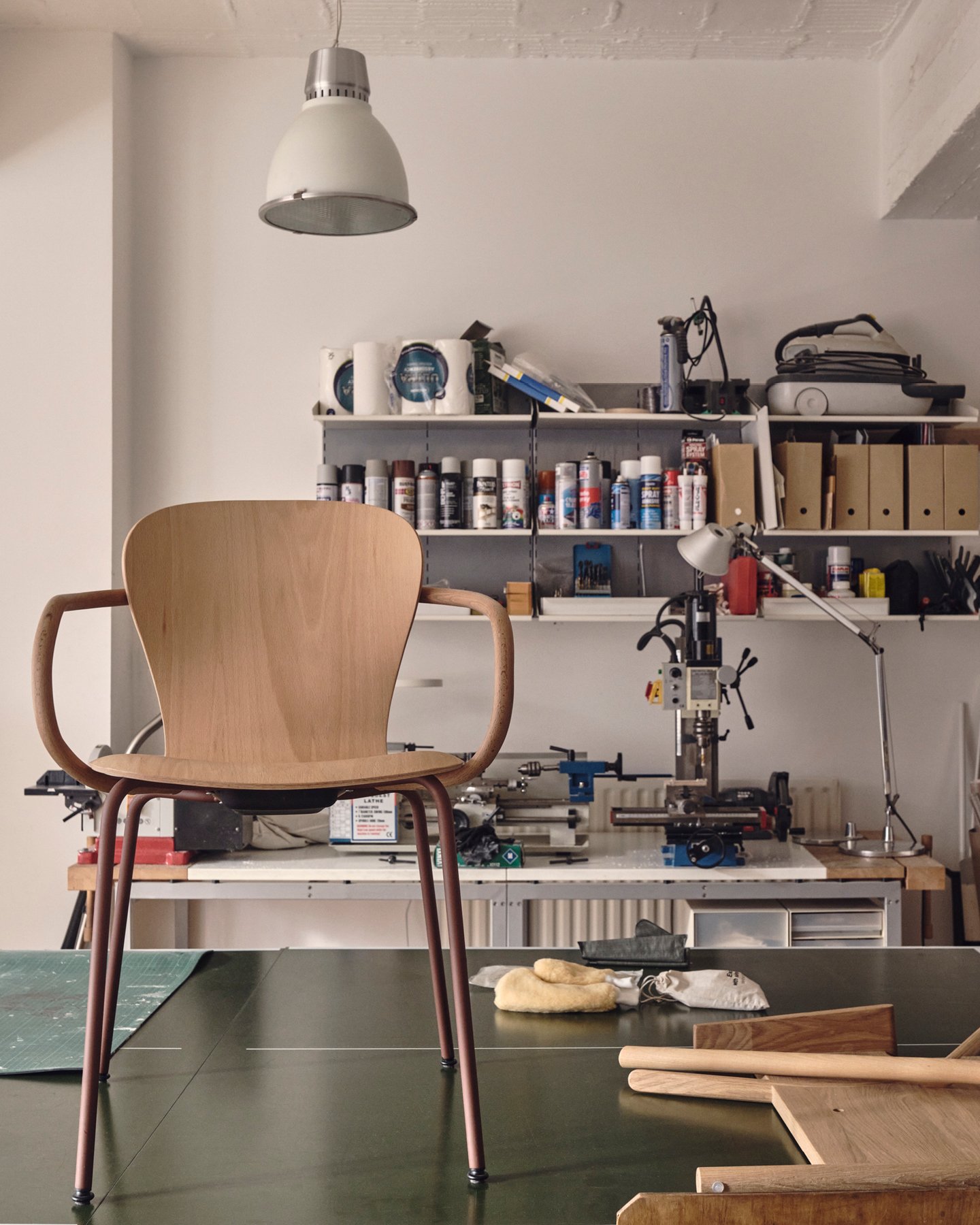
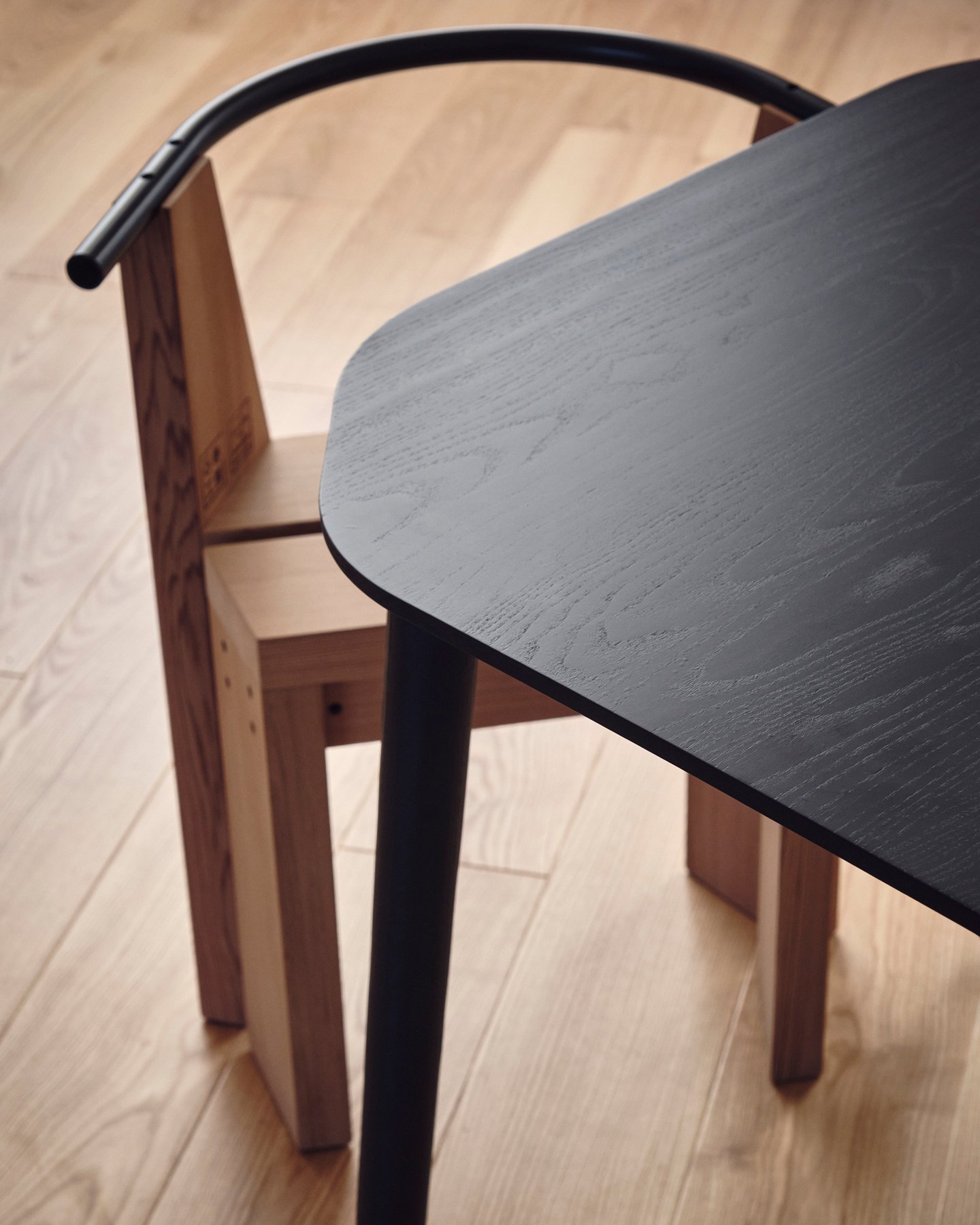
In the original “Design Q&A,” the curator Yolande Amic framed her investigation using considerations of limitation, disciplinary demarcation, and practical as well as ethical constraint, thus spurring the classic question, “What are the boundaries of design?” In the 1950s and ’60s, amidst the febrile recognition of industrial design’s world-making potential, this was a concern that drove the self-consciously modernist designers who later inspired Industrial Facility: George Nelson, Franco Albini, Gio Ponti, Richard Sapper, and, of course, Ray and Charles Eames. Half a century later, the question has lost some of its relevance. Given the diminished role assigned to design under our current form of consumer capitalism, the pressing issue has less to do with determining what design is, and more to do with how its practice, in any meaningful sense, is possible at all.
Colin and Hecht reject the prevailing professional conditions of industrial design, at least insofar as they concern client-studio relations. In place, they have, deliberately, even methodically, established their own conditions of practice. They have done so by exercising an unusual degree of care in deciding with whom and how they work. As a rule, the practice engages only with companies able to enter authentic dialogue with designers. As to its own composition as a studio, Industrial Facility has not grown significantly, resisting the standard economic model that inevitably places the creative directors at a distance from project work. In staying close to the process of defining problems and working through to solutions, the studio develops longstanding, truly discursive connections with its clients.
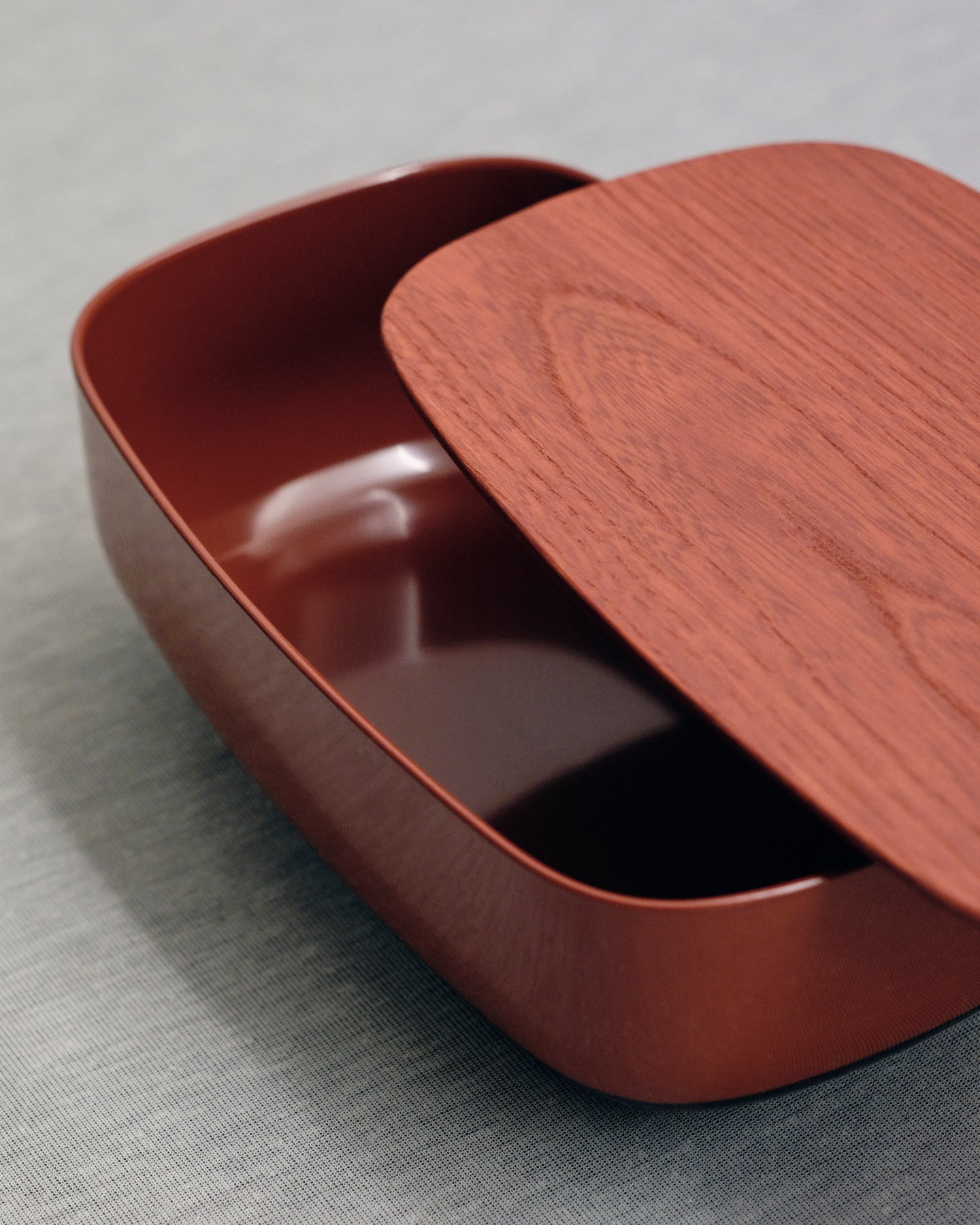
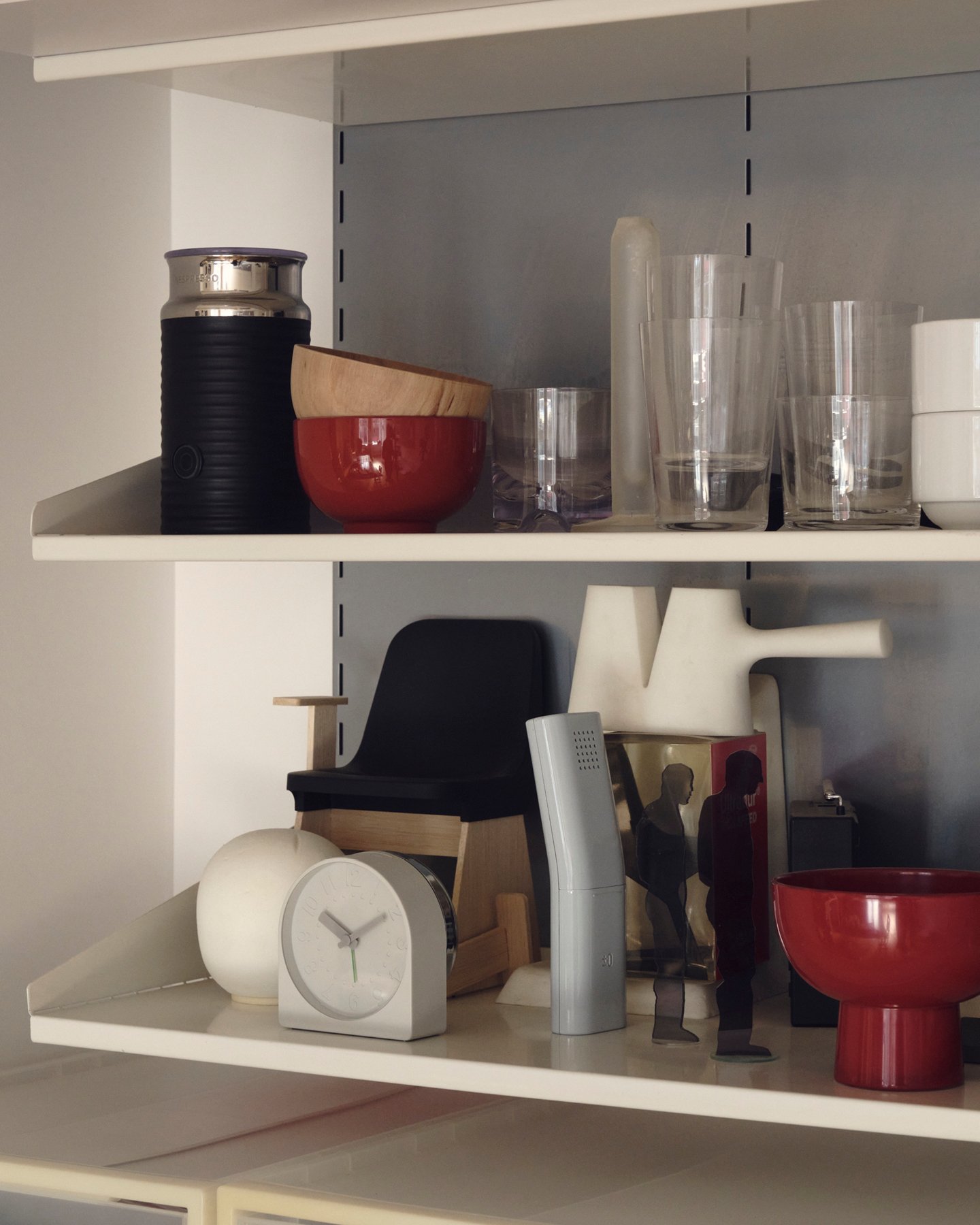
The design problems addressed by Industrial Facility are underpinned by certain fundamental inquiries: How relationships between objects form an environment, how our experience as users and operators is shaped in encounters with objects, how—as social beings, acting in behaviorally coded spaces—we relate (and fail to relate) to one another, and how all of that is continually formed and reformed by the technologies we develop. Colin and Hecht’s solutions, sometimes provisional, sometimes speculative, often witty, arise from this ongoing investigation that is expressed through things: a knife sharpener, seating, lighting, a radio, a paper shredder, knives, a doorstop, watches, a telephone, office systems, a toilet brush.
In the 1972 film Design Q&A, French curator Madame Amic presents Ray and Charles Eames with a series of archetypal questions about design’s meaning and purpose. As part of an ongoing feature in Kazam!, we posed those same questions to Kim Colin and Sam Hecht of Industrial Facility.
At their studio, Colin and Hecht develop new work in the midst of maquettes, completed projects, tools, and inspirational references.
Q: What is your definition of design?
A: Let's start with the real definition of design (not the romantic one that is often portrayed): Design is expected to be beautiful, cost little, be freely available, easy to use, and should last a long time. What a ridiculous set of contradictions these are, that a designer finds themselves having to navigate. We decided to not shy away from these contradictions, but to directly address them. To do this requires tenacity. It means becoming as good as any engineer, marketeer, or strategist, so that we may take an equal seat at these tables—allowing us to discuss why something should be made in the first place.
Q: Is design an expression of art?
A: Design can be artistic but it can never be art. Art is an expression of thought that makes you think. Its process is defined by its utterly uncompromising nature. Design is a materialization of thought that allows you to use. It will always involve some degree of compromise.
Q: What are the boundaries of design?
A: Anything that requires a multitude of decisions that need to be creatively navigated to reach something essential is within the realms of design.
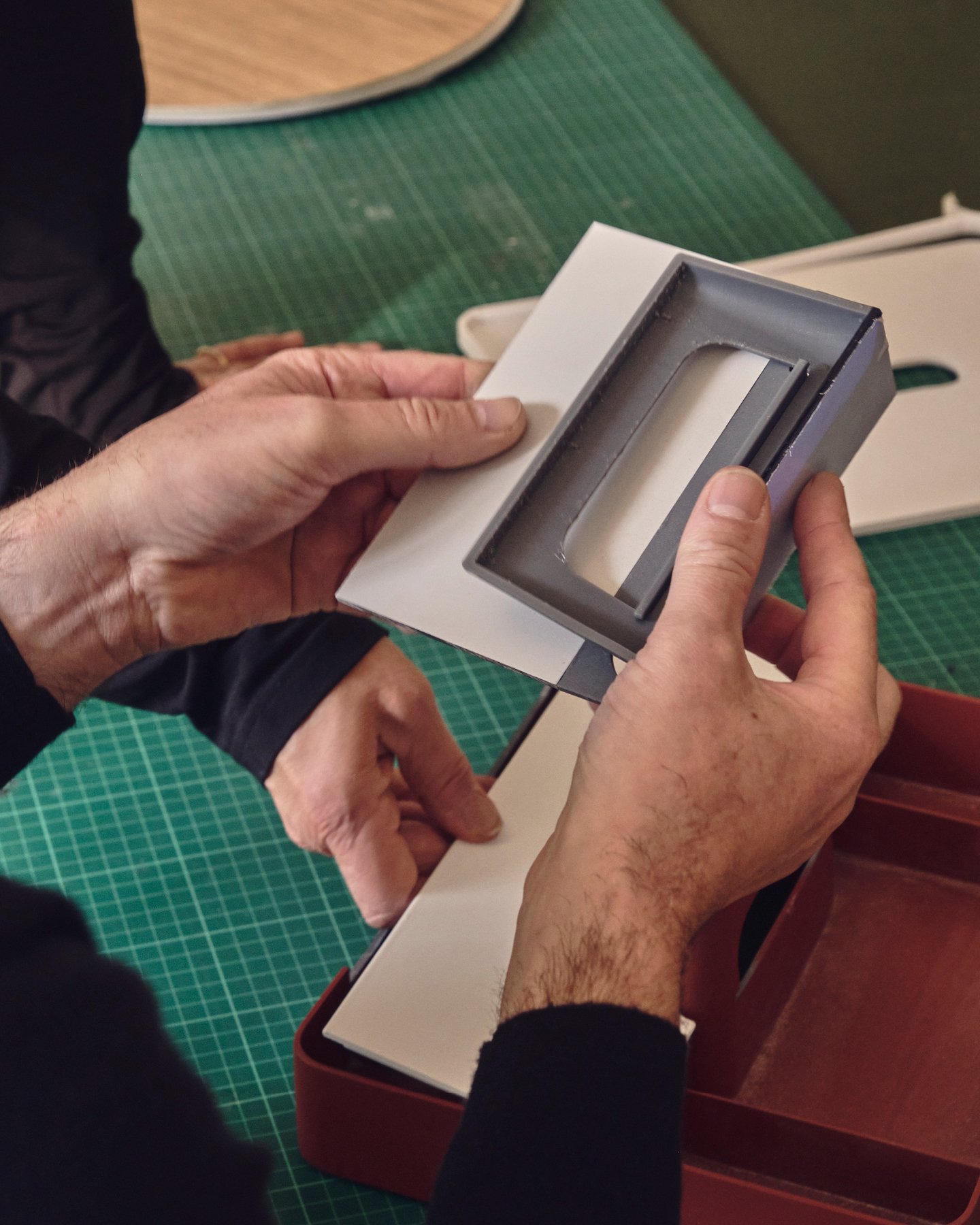
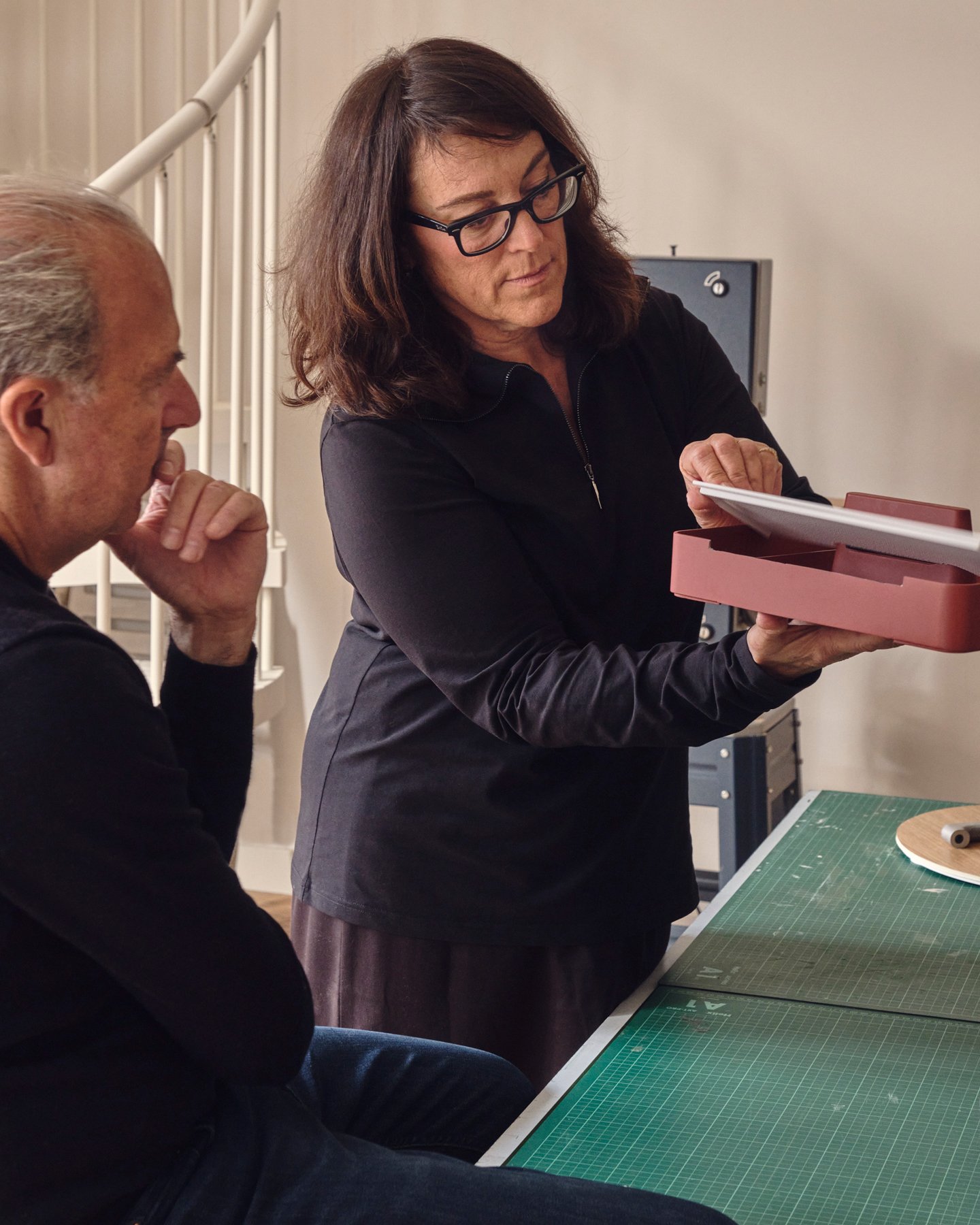
Q: Is design a discipline that concerns itself with only one part of the environment?
A: No—all environments can benefit from design.
Q: Is design a creation of an individual or a group?
A: Design can either be created by an individual or a group of individuals—similar to the ethos of an improvisational jazz band. But even in the group the individual is always preserved; they retain their own mind, instrument, and method. Having some alchemy in the group will allow the individual to devise something they could never have done by themselves.
Q: Is there a design ethic?
A: Unlike architects, who are classified as professionals and must abide by a code of conduct for the safety of others, design is considered a trade. Like all trades, the choice to be guided by ethics, morals, or principles resides largely with each designer. The designers we admire tend to be highly ethical, however this is not to say that design can ever be a search for truth, since design is ultimately a construct.
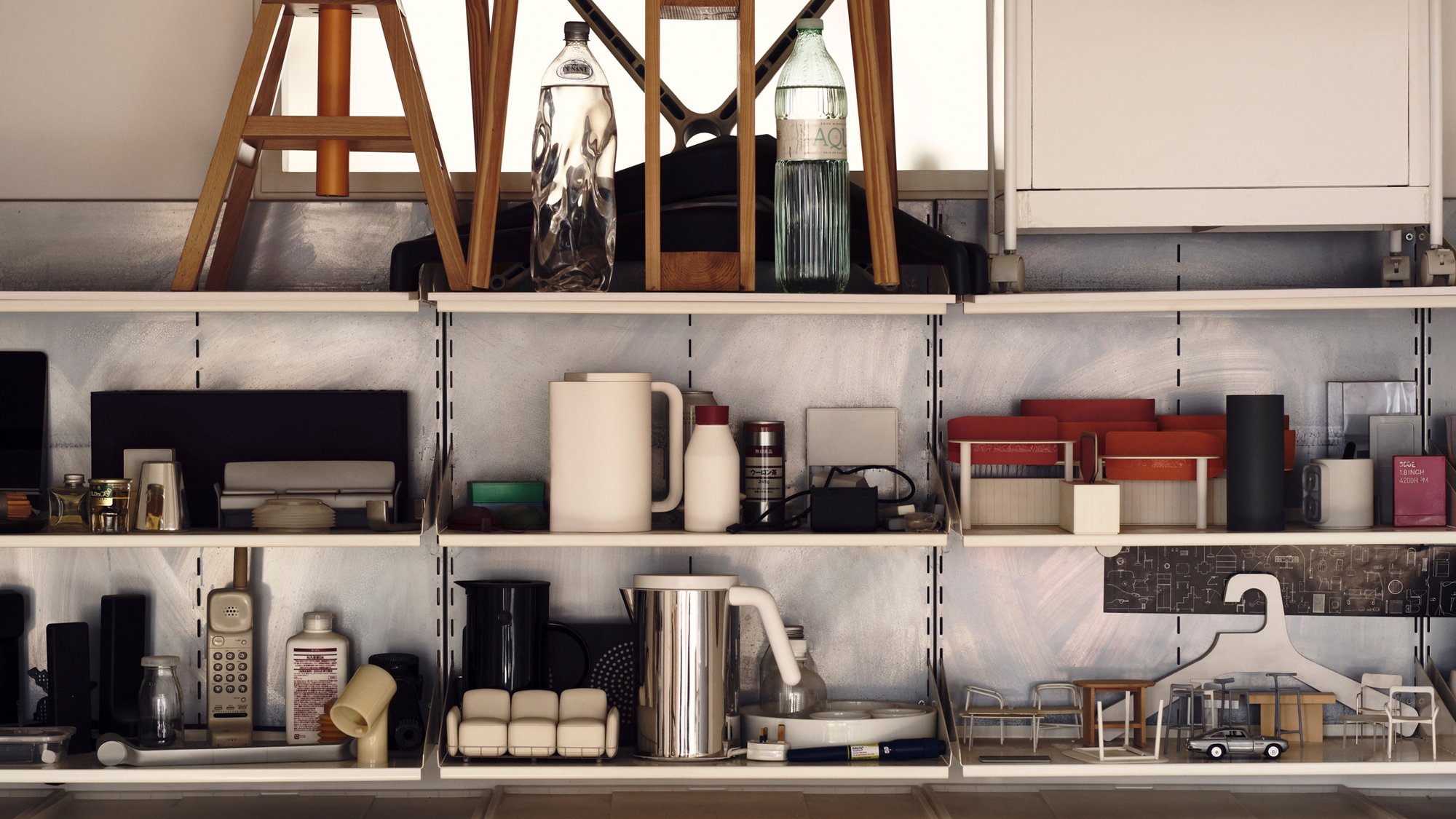
Q: Does design imply the idea of objects that are necessarily useful?
A: Successful design verges on the invisible—it should not get in the way of use, but rather, make sure that it is pleasurable in use, forms a relationship to what surrounds it, and is reliable and maintainable.
Q: Is it able to cooperate in the creation of works reserved solely for pleasure?
A: Yes—design should always be pleasurable, and so by default, it can be applied to the purely pleasurable.
Q: Ought form to derive from the analysis of function?
A: For some, design can start with form. This is not our way, but we would not wish to preach that function must always be the starting point, since this would exclude the value of a creative mind seeing functional possibilities within a form. For us, function is important, but context is more so.
Q: Can the computer substitute for the designer?
A: Design, by nature of its process, is often built upon a series of mistakes. Yes, it is now possible for a computer to even create random mistakes, but still hard for it to judge whether they are the good or bad ones.
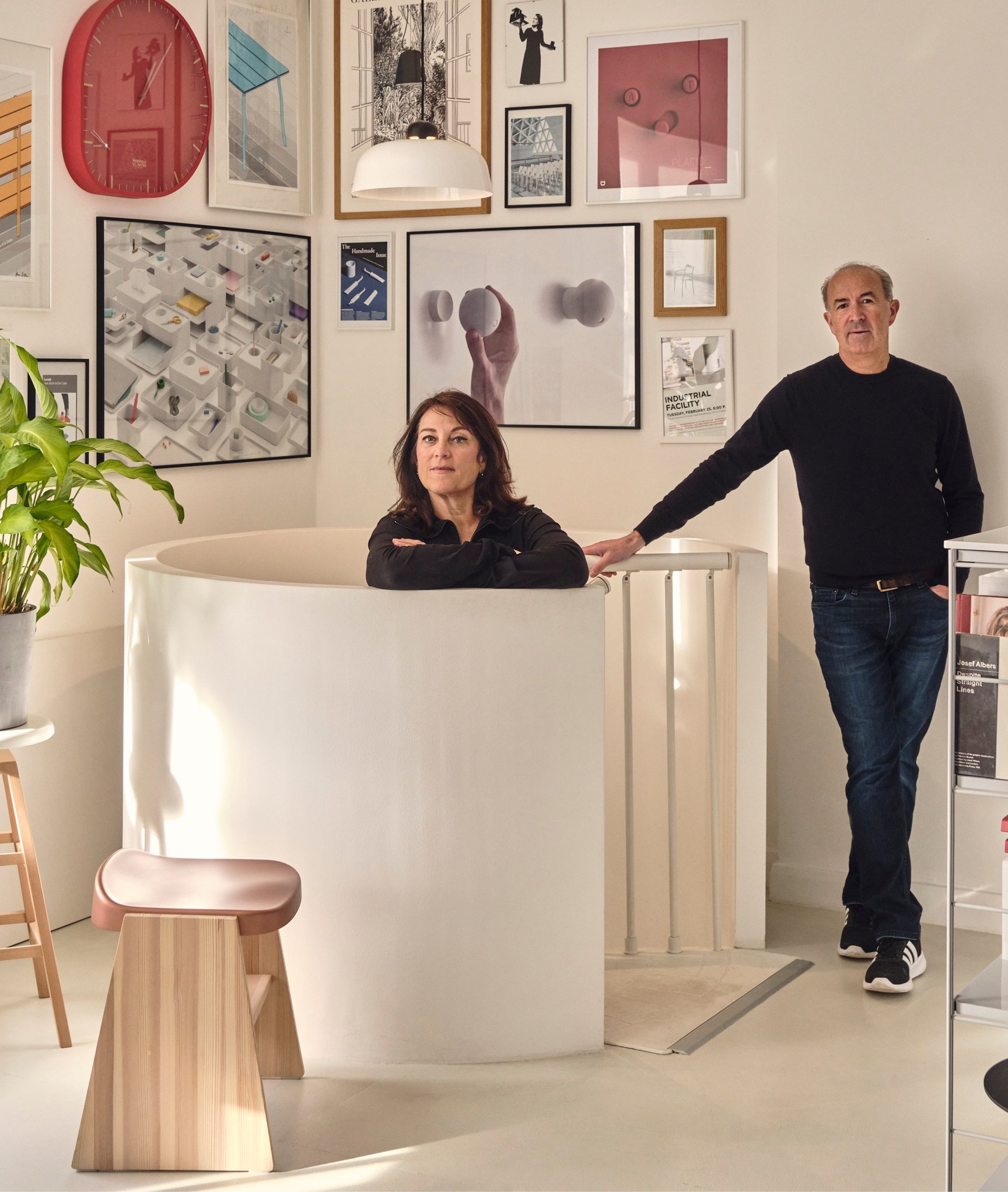
To practice design, you must be curious about the world. A designer should be unafraid to be the dumbest in the room and ask the most obvious of questions.
Sam Hecht and Kim Colin
Designers
Industrial Facility
Q: Does design imply industrial manufacture?
A: We would not suggest such a narrow definition—for us, it does. For others, it does not.
Q: Is design used to modify an old object through new techniques?
A: Design is capable of creating signals of the future, but resurrecting things from the past can be equally as innovative.
Q: Is design an element of industrial policy?
A: It is indeed.
Q: Does the creation of design admit constraint, and if so, what constraints?
A: Design can never not be constrained since it involves the realities of systems that are already in place: manufacturing, distribution, sales, and, of course, the opinions of a multitude of people.
Q: Does design obey laws?
A: It obeys gravity. The rest is up for debate.
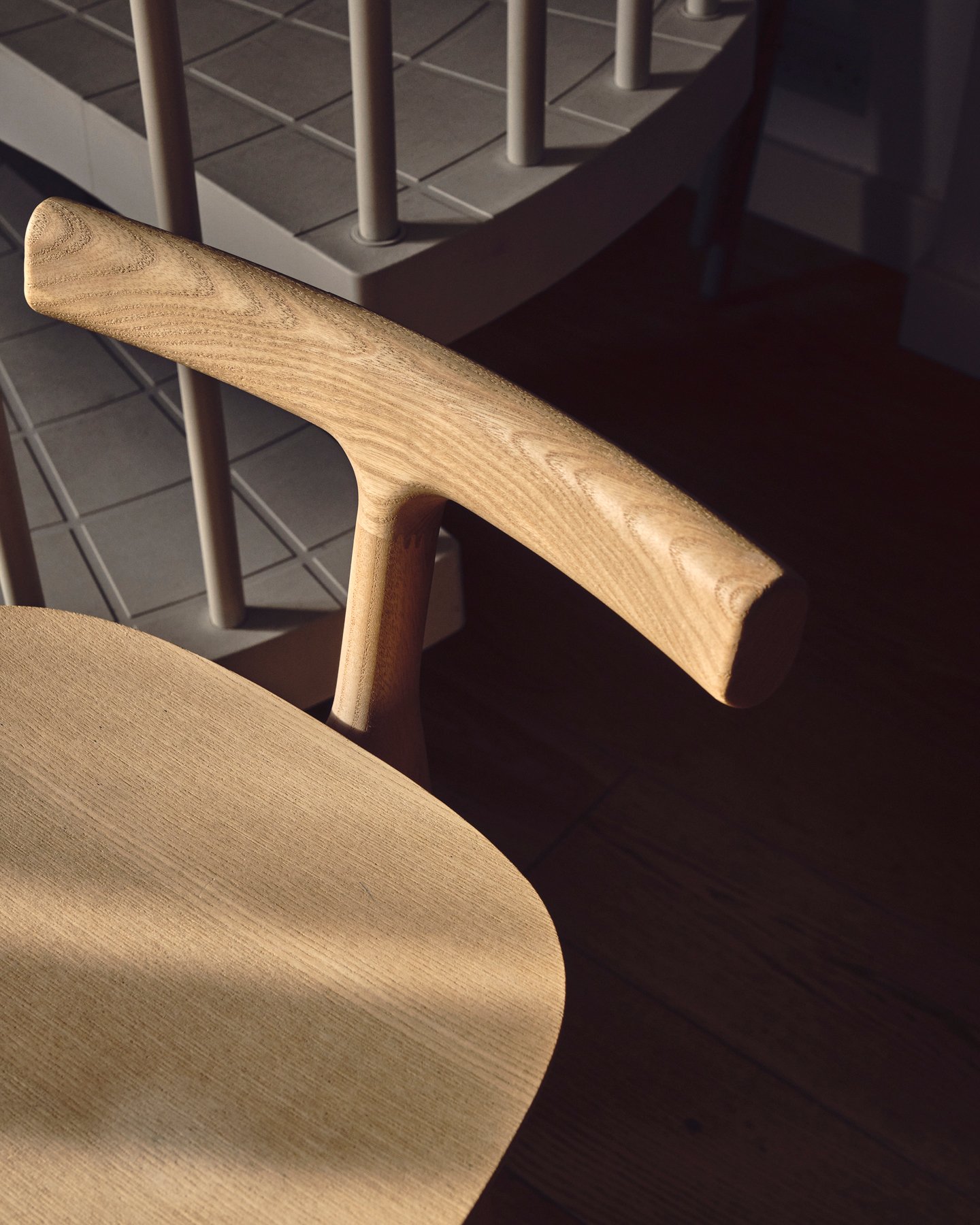
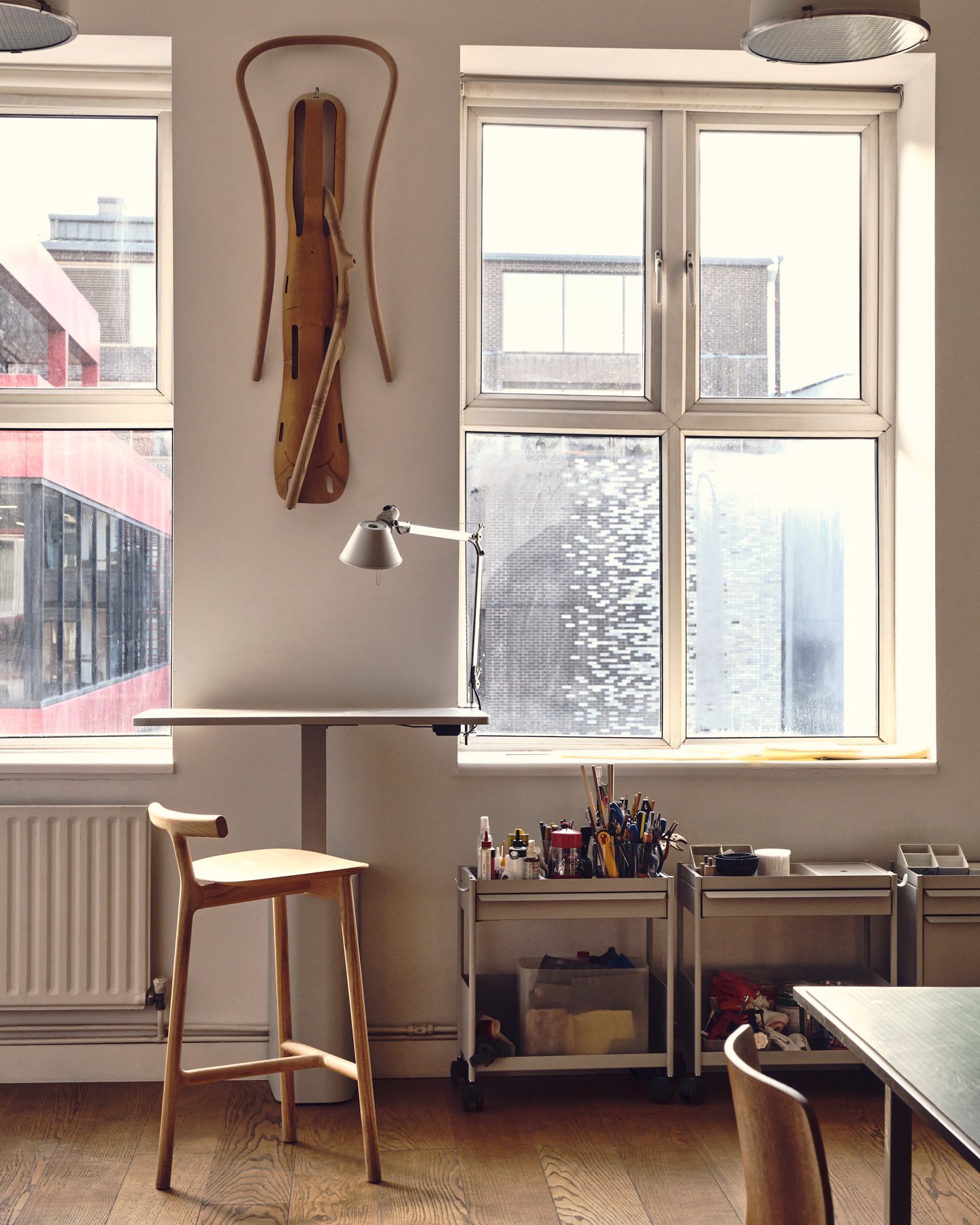
Q: Ought design tend toward the ephemeral or toward permanence?
A: The pendulum of design can legitimately swing between both the ephemeral and the permanent. For instance, flower arranging is an ephemeral exercise, yet we consider it an important part of life. We happen to concern ourselves more with permanence, since the responsibilities are greater.
Q: To whom does design address itself: To the greatest number? To the specialists or the enlightened amateur? To a privileged social class?
A: To quote Andy Warhol: “You can be watching TV and see Coca-Cola, and you know that the President drinks Coke, Liz Taylor drinks Coke, and just think, you can drink Coke, too. A Coke is a Coke and no amount of money can get you a better Coke than the one the bum on the corner is drinking. All the Cokes are the same and all the Cokes are good.”
Design can be democratic, socialist, and capitalist all at the same time.
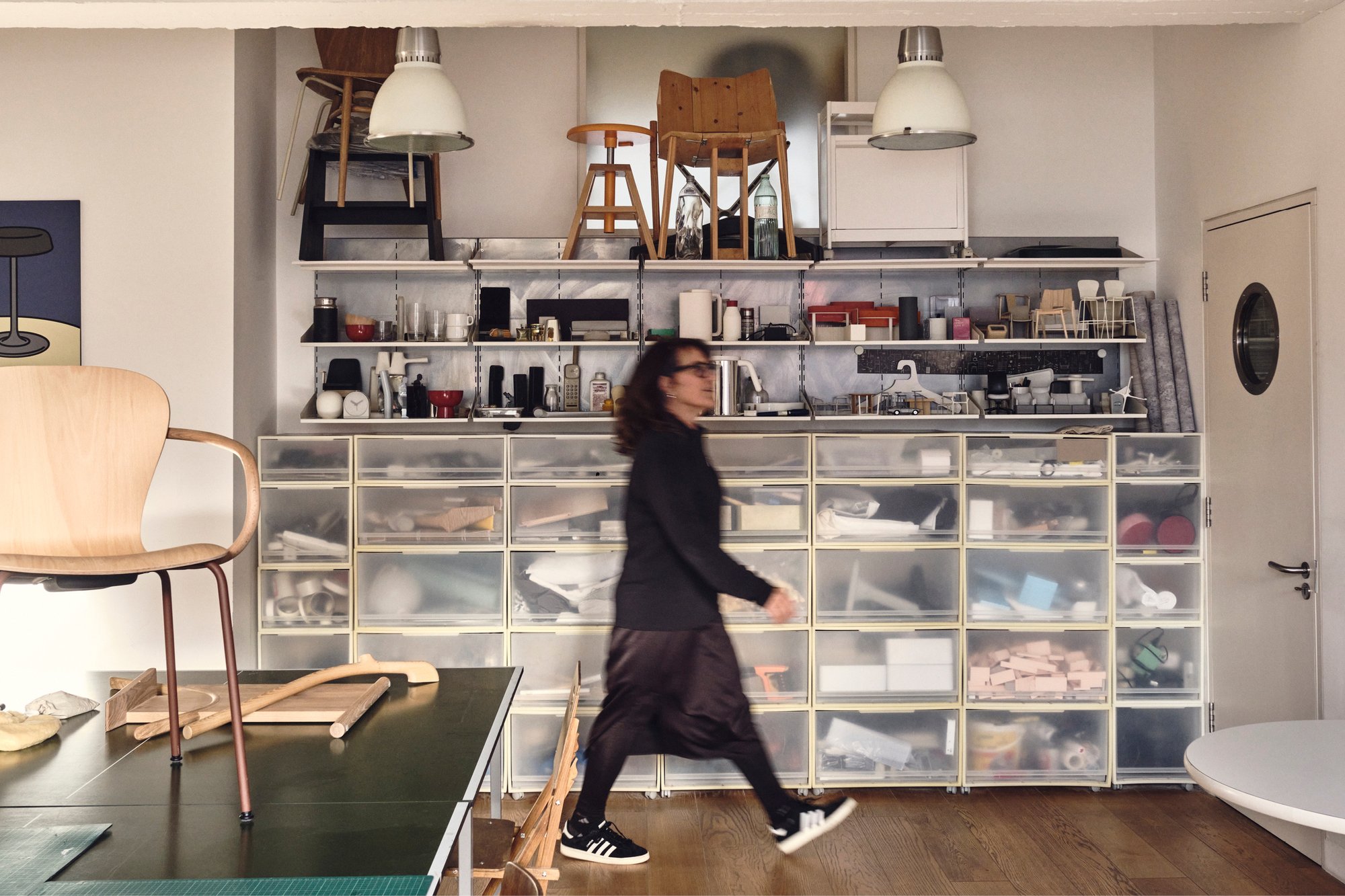
Q: Have you been forced to accept compromises while practicing the profession of “design”?
A: Design is by nature a constant navigation of compromise—which is why the underlying concept must be so clear and essential that any compromise it faces in its development does not negatively impact the final outcome. All of our work is a result of some form of compromise—but none of our work is defined by it.
Q: What do you feel is the primary condition for the practice of design and for its propagation?
A: To practice design, you must be curious about the world. A designer should be unafraid to be the dumbest in the room and ask the most obvious of questions. What the smart person in the room sees as obvious is to the designer a limit to curiosity. ❤
Peter Kapos is a writer and the strategic director of Systems Studio, a creative agency based in East London.
Ben Anders is a London-based interiors and lifestyle photographer with a passion for design, structure, and form.
At Kazam! Magazine we believe design has the power to change the world. Our stories feature people, projects, and ideas that are shaping a better tomorrow.